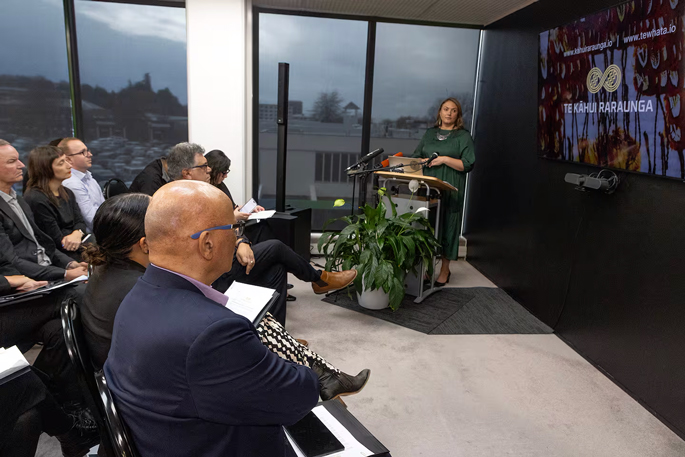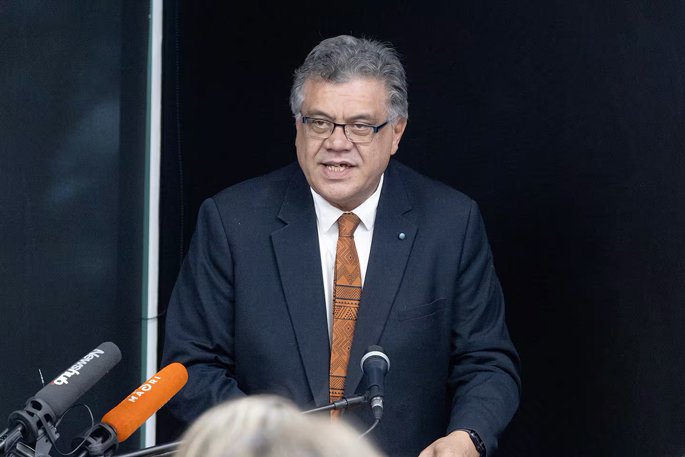One in three people in the Bay of Plenty were of Māori descent in 2023, and one in five nationwide, Census data released this week reveals.
It also shows Rotorua’s total population grew 3 per cent between 2018 and 2023 for a new total of 74,058 people, while Tauranga grew 11.5 per cent to 152,844 and Western Bay 10.4 per cent to 56,184.
Māori descent data from Census 2023 was presented in Rotorua yesterday morning by Kirikowhai Mikaere - the lead technician for the Data Iwi Leaders Group and pou ārahi of its operating arm Te Kāhui Raraunga.
It is the first time Māori descent information has been included in the first release of Census data on the iwi-designed and operated platform Te Whata. It was described as a “historic step” by Te Kāhui Raraunga and Stats NZ.
The Census is the official count of the people and dwellings in New Zealand and is held every five years, most recently on March 7, 2023.
Stats NZ says it counts Māori in two ways – Māori descent is based on whakapapa while affiliation to the Māori ethnic group is a self-determined cultural affiliation.
Census data is used to inform policy development and planning, as well as decisions on services such as healthcare, education, housing, and transport.
More than 60 per cent of Rotorua under-25s are Māori
Speaking at the Rotorua event, held at the Te Kāhui Raraunga office, Mikaere says the national Māori population in 2023 was 978,246 – or 19.6 per cent of the New Zealand population.
The Māori population increased 12.5 per cent from 869,850 in 2018, while the total New Zealand population increased 6.3 per cent.
The age distribution showed 46.5 per cent of Māori in 2023 were younger than 25. Nationally in this age range, almost one in three people were Māori. In Rotorua, it was 60.8 per cent, Mikaere says – about three in five.
 Kirikowhai Mikaere, lead technician for the Data Iwi Leaders Group and pou ārahi of its operating arm Te Kāhui Raraunga. Photo / Andrew Warner.
Kirikowhai Mikaere, lead technician for the Data Iwi Leaders Group and pou ārahi of its operating arm Te Kāhui Raraunga. Photo / Andrew Warner.
The median age of the Māori descent population was 27.2 years, more than a decade younger than the New Zealand median of 38.1 years.
Bay of Plenty data shows one-third – 32.9 per cent – were Māori, and the Māori population increased 12.1 per cent from 2018.
Māori were close to making up half of Rotorua’s population, with 45.3 per cent of residents stating they were of Māori descent, compared to 51.8 per cent indicating non-Māori descent. In Tauranga, 21.9 per cent indicated Māori descent and 24.1 per cent in Western Bay.
Māori population ‘young, resilient, and rapidly growing’
Mikaere (Tūhourangi, Ngāti Whakaue) told the Rotorua Daily Post it's important to understand the makeup of communities and to ensure the “right types” of resources and education were being invested in for this “youthful Māori population”.
“I think it’s really positive that we have a growing population and so I think it’s understanding how we work together … to ensure we’re creating a safe space for our people … for our rangatahi, in a way that means they can aspire to be whatever they want to be.”
This included investing in options for young people to stay in the Bay of Plenty by being educated and employed here, she says.
She says the age demographic data provided key insights for politicians locally and nationally about who the current voters are and future voters will be.
 The newly released Māori descent data was presented in Rotorua today. Photo / Andrew Warner.
The newly released Māori descent data was presented in Rotorua today. Photo / Andrew Warner.
In a Te Kāhui Raraunga media release, Mikaere says the Māori descent data shows a “transformative shift in the make-up of Aotearoa” and the Māori population was “young, resilient, and rapidly growing”.
“This would suggest that we will see Māori become a dominant part of the future workforce of Aotearoa, enhancing diversity, promoting new ideas, and stimulating creative solutions across industries.”
 Te Kāhui Raraunga data apprentice Te Atawhai Amaru-Tibble. Photo / Andrew Warner.
Te Kāhui Raraunga data apprentice Te Atawhai Amaru-Tibble. Photo / Andrew Warner.
Te Kāhui Raraunga data apprentice Te Atawhai Amaru-Tibble said the data was important for those making decisions for rangatahi amid a growing young population.
The 24-year-old (Ngāti Porou, Ngāti Raukawa, Ngāti Mutunga o Wharekauri, Ngāti Tūwharetoa) said he expressed his Māoritanga by “living and breathing” being Māori and supporting Māori kaupapa “in a Pākehā world”.
“Just being staunch in who you are, grounded.”
Overcoming Census ‘trust issue’
Ngāti Kahu ki Whangaroa and Ngāpuhi ki Whangaroa iwi representative Rāniera Kaio says he helped collect Census data in the Far North.
Kaio says there is a “trust issue” among Māori with the Census and the main challenge is making it “relevant” to those in the region.
In mid-2022, iwi representatives ensured data collectors were local and started talking to people at community events.
They also used iwi media to publicise the Census as “relevant” for people’s health, education and households, and their children.
He deemed it a “success” with a higher response rate recorded in 2023 than in the three previous Censuses.
 Te Kāhui Raraunga chairman Rahui Papa speaking at the launch event of the Māori descent data in Rotorua. Photo / Andrew Warner.
Te Kāhui Raraunga chairman Rahui Papa speaking at the launch event of the Māori descent data in Rotorua. Photo / Andrew Warner.
In a joint media release from Te Kāhui Raraunga and Stats NZ, Te Kāhui Raraunga chairman Rahui Papa says sharing the release of 2023 Census data highlighted the positive outcomes that could be achieved through iwi-Crown partnerships.
Papa says collecting and hosting data on an iwi data platform was about using Māori stories and data to lead “critical conversations” with the government, funders, and strategic partners.
In the media release, Government Statistician and Stats NZ chief executive Mark Sowden says it worked closely with Te Kāhui Raraunga on the Census aiming to help iwi and Māori access and use data about themselves.
2023 Census iwi affiliation data will be released on September 26 and October 31 on Te Whata.



2 comments
What absolute nonsense.
Posted on 30-05-2024 09:37 | By Bruja
What percentage of BOP population has ANY % of Maori dna coursing through their veins. That is the determining factor and the only determining factor. What would that be? 16%? I'd say so.
A pointless distinction…
Posted on 30-05-2024 11:01 | By Shadow1
considering that all of these people are also of European descent.
When will we all be able to claim that we are New Zealanders?
Shadow1.
Leave a Comment
You must be logged in to make a comment.